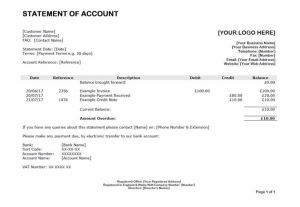Example Of A Debtor Statement Of Account Template
Below is an example of a template for a debtor statement of account, which contains some example items.
You can raise INVOICE FINANCE against unpaid debtor accounts to release cash if you have outstanding invoices.
This is the template:
This is a Word template document sample of the above example document:
This is a list of all the information that you should include in a debtor statement of account:
- Your company name and logo.
- Your company address.
Your phone number and email address - you may wish to specify someone who should be contacted with any queries about the statement together with an extension number (if required).- State that it is a "Statement of Account".
- Statement date - the date at which the account items were produced.
- Customer's name and address.
- Customer's FAO contact name, if applicable.
- Your and/or your customer's reference numbers (if required).
- Your VAT number.
- An opening balance (this is optional; it is a total of all the previous items brought forward; you may prefer to have all items listed, referred to as an open item statement).
- Itemisation of each transaction, such as invoices, debit notes, credit notes and payments. The date, reference number, description and value should be stated in each case. You may additionally want to itemise VAT for each item, or overall on the statement. You may wish to structure the items into a column of debits and a column of credits, with a balance or running total adjusted after each item.
- Total value due - the closing balance of the statement. This may include overdue items, those that are due now and some that are not yet due.
- The overdue amount - This is to make the amount of the payment that is now required to bring the customer's account up to date very clear.
- Customer's payment terms, e.g. 30 days. So they can see from the invoice dates which items are overdue. Some companies prefer to state which items are "overdue" and "current". In some cases, a debtor's aged analysis format is used where the items are broken down into various columns according to age, e.g. current, 30-60 days, 60-90 days and 90 days+ or some similar format with even more granularity.
- Your bank details or payment instructions, e.g. bank, account name, account number and sort code.
- Your registered office, registered number and names of your directors.
- Page numbers, e.g. page 1 of 3, as account statements, can often run to several pages if they contain numerous items.
Further Resources
- Guide - Free credit control guide - a step-by-step guide to undertaking in-house credit control.







